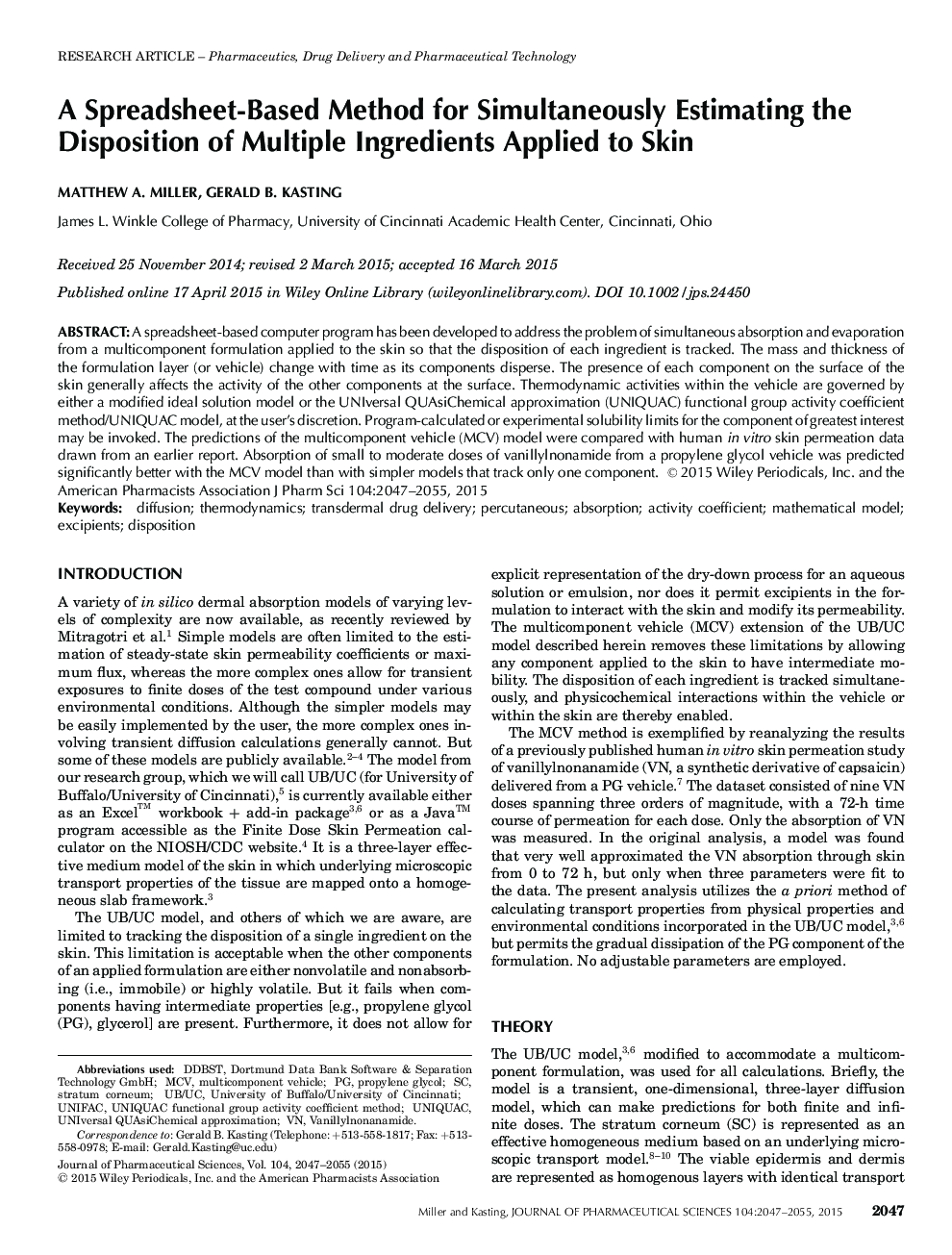| Article ID | Journal | Published Year | Pages | File Type |
|---|---|---|---|---|
| 2484602 | Journal of Pharmaceutical Sciences | 2015 | 9 Pages |
Abstract
A spreadsheet-based computer program has been developed to address the problem of simultaneous absorption and evaporation from a multicomponent formulation applied to the skin so that the disposition of each ingredient is tracked. The mass and thickness of the formulation layer (or vehicle) change with time as its components disperse. The presence of each component on the surface of the skin generally affects the activity of the other components at the surface. Thermodynamic activities within the vehicle are governed by either a modified ideal solution model or the UNIversal QUAsiChemical approximation (UNIQUAC) functional group activity coefficient method/UNIQUAC model, at the user's discretion. Program-calculated or experimental solubility limits for the component of greatest interest may be invoked. The predictions of the multicomponent vehicle (MCV) model were compared with human in vitro skin permeation data drawn from an earlier report. Absorption of small to moderate doses of vanillylnonamide from a propylene glycol vehicle was predicted significantly better with the MCV model than with simpler models that track only one component.
Keywords
Related Topics
Health Sciences
Pharmacology, Toxicology and Pharmaceutical Science
Drug Discovery
Authors
Matthew A. Miller, Gerald B. Kasting,
